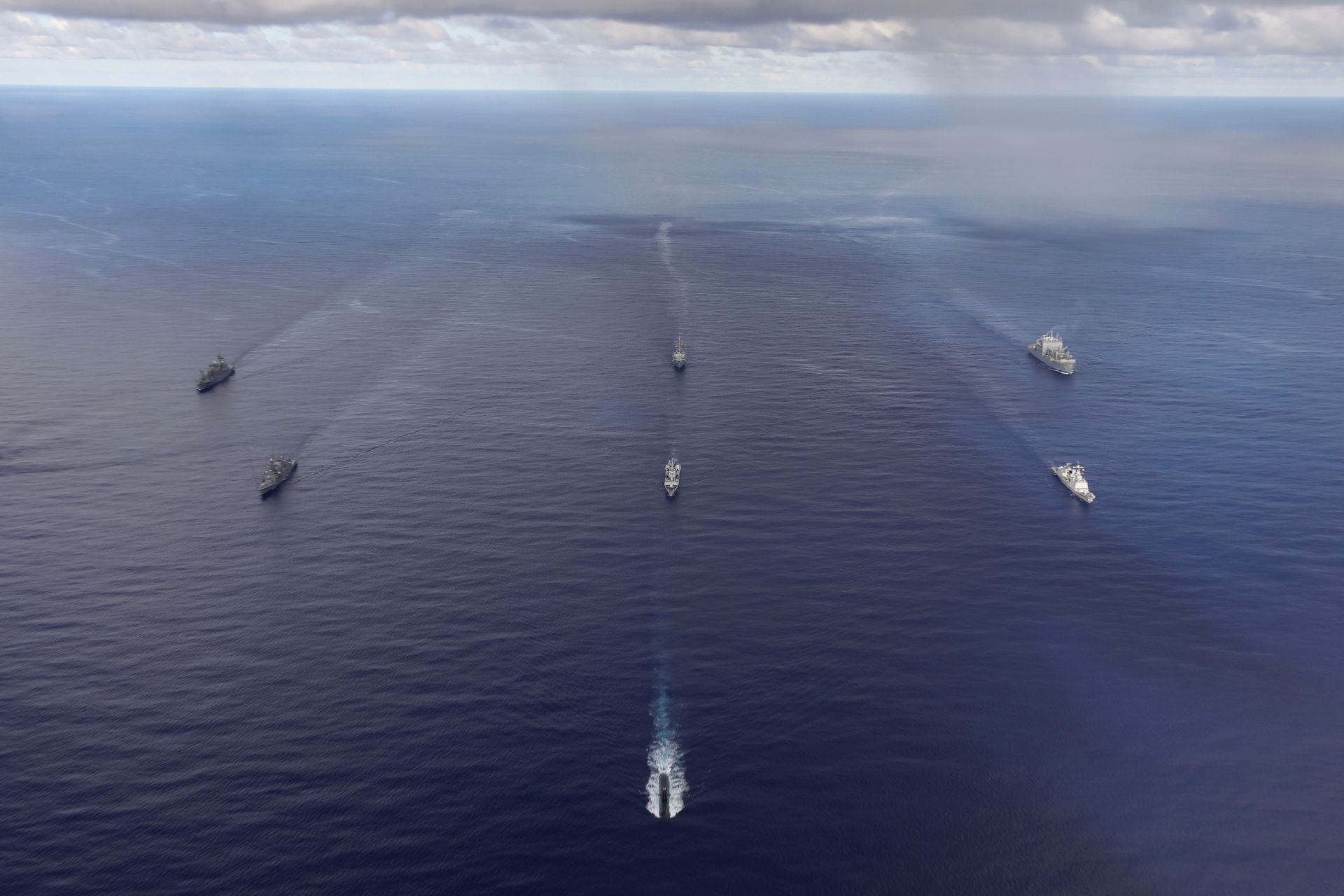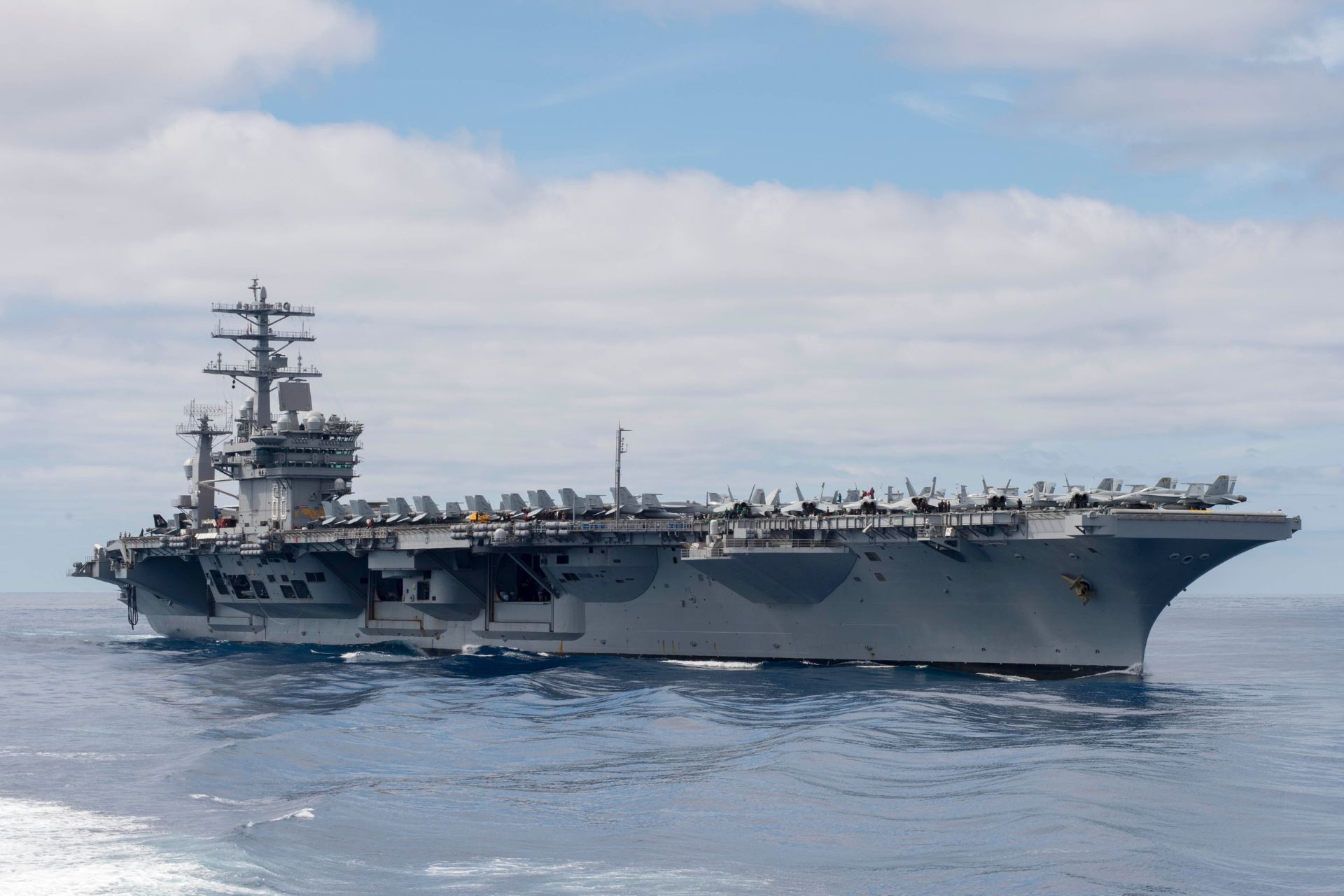Breaking News
US Considers Escorting Philippine Ships Amid Rising South China Sea Tensions.
The United States is considering the possibility of escorting Philippine ships in the South China Sea amid escalating tensions with China. U.S. Indo-Pacific Command Commander Admiral Samuel Paparo discussed this option during a press conference on August 28, 2024, in Manila, alongside Philippine Armed Forces Chief General Romeo Brawner Jr. This consideration comes in response to increasing clashes between Chinese and Philippine vessels in the disputed waters, where China's aggressive actions have drawn international criticism.
Follow Army Recognition on Google News at this link

Royal Canadian Navy, Japan Maritime Self-Defense Force, Republic of Korea Navy and U.S. Navy warships sail in formation in the Philippine Sea during exercise Pacific Vanguard, Aug. 26, 2024. (Picture source: US DoD)
This potential U.S. intervention highlights the strengthening defense ties between Washington and Manila, rooted in the 1951 Mutual Defense Treaty, which commits both nations to support each other in the event of an armed attack. Although the treaty has not yet been activated, the Biden administration has repeatedly reaffirmed its commitment to defend the Philippines, including in the South China Sea. However, the Philippines has not invoked the treaty, with General Brawner emphasizing the country's focus on self-reliance, seeking U.S. assistance only as a last resort.
The South China Sea remains a significant point of contention, with China continuing to claim nearly the entire region, frequently clashing with Philippine ships attempting to resupply their outposts. In a recent incident, Chinese vessels blocked Philippine ships from delivering supplies, leading to a standoff at Sabina Shoal, one of many disputed areas. Both nations have accused each other of escalating the situation, with China blaming the Philippines for provocations, while Manila condemns Beijing's aggressive tactics.
Philippine Defense Secretary Gilberto Teodoro Jr. has called for stronger international condemnation of China's actions, urging a collective response from Southeast Asian nations. Despite these calls, China remains defiant, continuing to expand its military presence in the region.
The growing friction between China and the Philippines, coupled with the possibility of U.S. military intervention, underscores the complexity of maintaining stability in one of the world's most contested maritime regions.

The U.S. Navy operates several carrier strike groups centered around Nimitz and Gerald R. Ford-class aircraft carriers, which are frequently deployed in the region (Picture source: US DoD)
The U.S. maritime capabilities in the Indo-Pacific, particularly in the South China Sea, are substantial and aimed at countering China's growing influence in this strategic region.
The U.S. Navy operates several carrier strike groups centered around Nimitz and Gerald R. Ford-class aircraft carriers, which are frequently deployed in the region. These groups are supported by destroyers, cruisers, and attack submarines, all equipped with advanced missile systems such as the Tomahawk and Aegis.
The U.S. presence is further bolstered by a network of bases and military installations in key locations such as Guam, Okinawa in Japan, and the Philippines, allowing for rapid force projection.
In the South China Sea, the U.S. regularly conducts "freedom of navigation operations" (FONOPs) to challenge China's excessive territorial claims, while also supporting regional allies such as the Philippines and Japan. Additionally, the U.S.'s ability to monitor and respond to Chinese movements is enhanced by the use of drones, satellites, and advanced intelligence capabilities that ensure constant vigilance in this highly contested area.


























